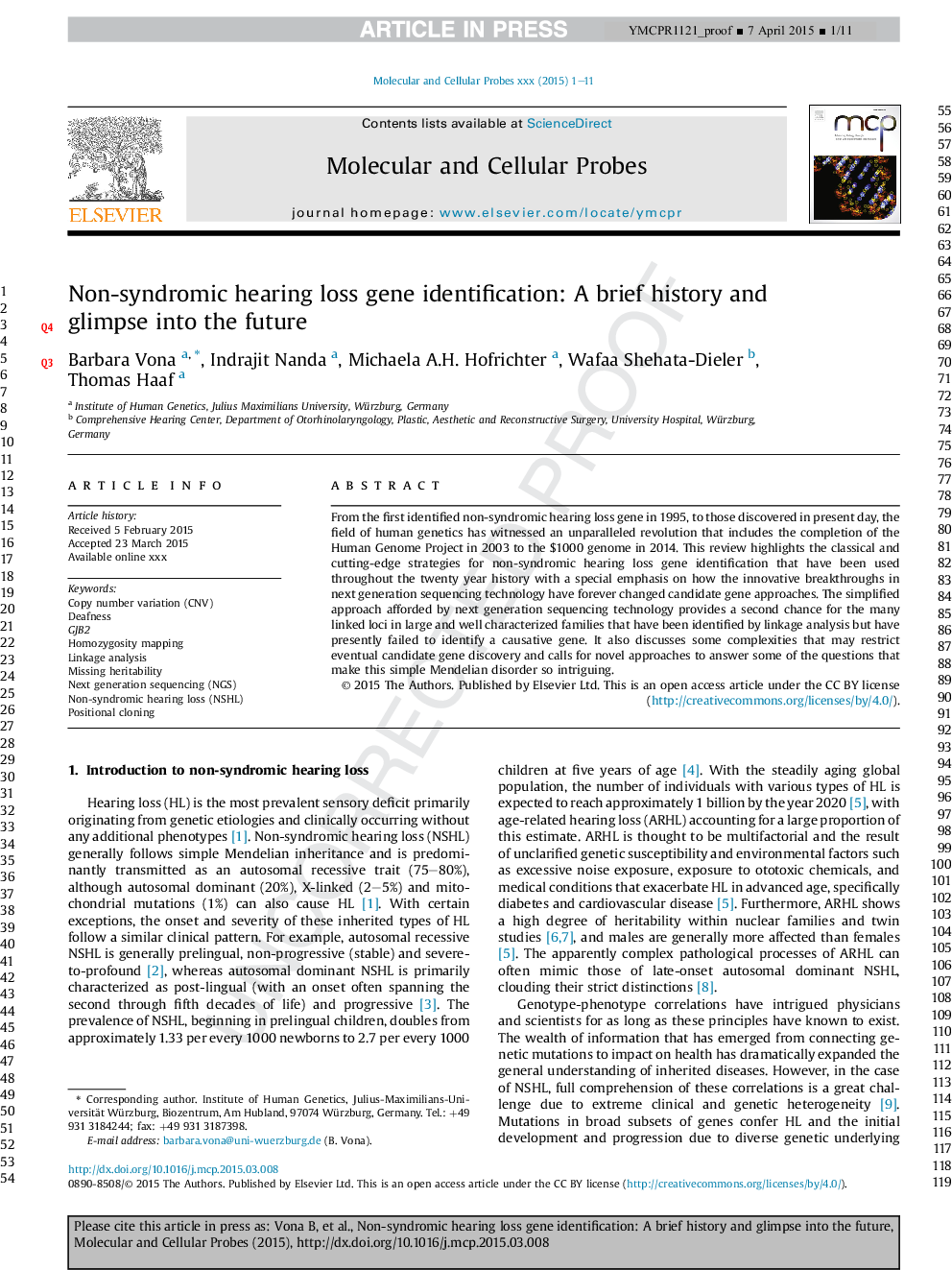| Article ID | Journal | Published Year | Pages | File Type |
|---|---|---|---|---|
| 10957709 | Molecular and Cellular Probes | 2015 | 11 Pages |
Abstract
From the first identified non-syndromic hearing loss gene in 1995, to those discovered in present day, the field of human genetics has witnessed an unparalleled revolution that includes the completion of the Human Genome Project in 2003 to the $1000 genome in 2014. This review highlights the classical and cutting-edge strategies for non-syndromic hearing loss gene identification that have been used throughout the twenty year history with a special emphasis on how the innovative breakthroughs in next generation sequencing technology have forever changed candidate gene approaches. The simplified approach afforded by next generation sequencing technology provides a second chance for the many linked loci in large and well characterized families that have been identified by linkage analysis but have presently failed to identify a causative gene. It also discusses some complexities that may restrict eventual candidate gene discovery and calls for novel approaches to answer some of the questions that make this simple Mendelian disorder so intriguing.
Keywords
Related Topics
Life Sciences
Biochemistry, Genetics and Molecular Biology
Cell Biology
Authors
Barbara Vona, Indrajit Nanda, Michaela A.H. Hofrichter, Wafaa Shehata-Dieler, Thomas Haaf,
